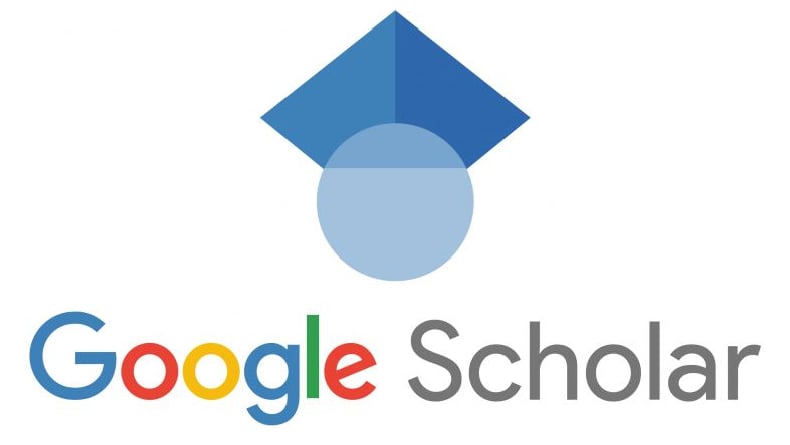MALL in English Language Teaching: The Instructional Model of Integrating Four Skills Facilitated by WhatsApp Application
Keywords:
Instructional Model; WhatsApp in education; Mobile-Assisted Language Learning (MALL); English Language SkillsAbstract
With the rapid advancement of information and communication technology (ICT), mobile devices have become increasingly integrated into educational environments. This paper focuses on the use of WhatsApp, a popular messaging app, as a powerful tool for enhancing English language learning by efficiently managing student tasks. It presents an instructional model that incorporates four key English language skills—listening, speaking, reading, and writing—through WhatsApp. This model allows both students and teachers to explore the practicalities, challenges, and achievements associated with using WhatsApp for academic tasks, both during and outside of school hours. The instructional model utilizes WhatsApp in both synchronous and asynchronous modes, offering flexibility in delivering content. Activities for each language skill leverage WhatsApp's capabilities, such as voice notes, text messaging, and multimedia sharing, to enhance the learning experience. This model fosters real-time communication and enables students to practice their language skills even in resource-limited environments. This instructional model implies that WhatsApp is a valuable tool for language teaching, especially for educators with low digital literacy. Its accessibility and flexibility allow for the continuation of education in difficult circumstances. Besides, the instructional model presented provides a framework that can be adapted by English teachers for various learning contexts, supporting both synchronous and asynchronous learning environments.
Downloads
References
Al-Kadi, A. (2018). A Review of technology integration in ELT: From CALL to MALL. Language Teaching and Educational Research (LATER), 1(1), 1-12.
Amry, A.B. (2014). The impact of WhatsApp mobile social learning on the achievement and attitudes of female students compared with face to face learning in the classroom. European Scientific Research Journal. 10(22):116–36.
Barhoumi, C. (2015).The effectiveness of whatsapp mobile learning activities guided by activity theory on students' knowledge management. Contemporary Educational Technology, 6(3), 221-238. Retrieved from: https://eric.ed.gov/?id=EJ1105764Cetinkaya, 2017
Cetinkaya, L. (2017). The Impact of Whatsapp Use on Success in Education Process. International Review of Research in Open and Distributed Learning. (18)7: 59–74.
Davies G. & Higgins J. (1982). Computers, language and language learning. London: Center for Information on Language Teaching and Research.
Fauzi, I. (2021). Teaching English Using Whatsapp During Learning From Home: Impacts to Students and Implication to Teachers. LET: Linguistics, Literature and English Teaching Journal. (11)2. 59-78.
Fauzi, I., & Angkasawati, P. (2019). The use of listening logs through whatsapp in improving listening comprehension of EFL students. Journal of Applied Linguistics and Literature, 4(1), 13–26. DOI: https://doi.org/10.33369/joall.v4i1.6773
Ghee, T.T., Terng, H.F., & Chui, H.C.(2019). Students’ Perception of WhatsApp as an Effective Medium for Enhancing Listening Skill in Foreign Language Learning. Pertanika Journal of Social Science and Humanities, 27 (2): 833 – 845. https://www.researchgate.net/publication/334082511
Gon, S., & Rawekar, A. (2017). Effectivity of E-Learning through Whatsapp as a Teaching Learning Tool. MVP Journal of Medical Sciences, Vol 4(1), 19– 25. DOI: https://doi.org/10.18311/mvpjms/0/v0/i0/8454
Hamad, M.M. (2017). Using WhatsApp to Enhance Students’ Learning of English Language Experience to Share. Higher Education Studies (7)4, 74– 87. DOI: http://doi.org/10.5539/hes.v7n4p74
Hartoyo. (2006). Individual Differences in Computer Assisted Language Learning (CALL). Semarang: Universitas Negeri Semarang Press.
Huang, Y.-M., Huang, Y.-M., Huang, S.-H., Lin, Y.-T. (2012). A ubiquitous English vocabulary learning system: Evidence of active/passive attitudes vs. usefulness/ease-of-use. Computers and Education, 58, 273-282.
Kern, R. G. (1995) Restructuring classroom interaction with networked computers: Effects on quality and characteristics of language production. Modern Language Journal, (79)4, 457-476.
Kern, R. and Warschauer, M. (2000). ‘Theory and practice of network-based language teaching’, in M.Warschauer and R. Kern (Eds.), Network-Based Language Teaching: Concepts and Practice (pp. 1–19), Cambridge, UK: Cambridge University Press.
Kukulska-Hulme, A., & Shield, L. (2008). An overview of mobile assisted language learning: From content delivery to supported collaboration and interaction. ReCALL, 20(3), 271-289. https://doi.org/10.1017/S0958344008000335
Lai, C. C., & Kritsonis, W. A. (2006). The advantages and disadvantages of computer technology in second language acquisition. Doctoral Forum: National Journal for Publishing and Mentoring Doctoral Student Research, 3(1), 1-6.
Li, S. C., Pow, J. W., Wong, E. M., & Fung, A. C. (2010). Empowering student learning through Tablet PCs: A case study. Education and Information Technologies, 15(3), 171-180.
Plana, M. G-C., Escofet, M. I. G., Figueras, I. T., Gimeno, A., Appel, C., & Hopkins, J. (2013). Improving learners’ reading skills through instant short messages: A sample study using WhatsApp.. 4th World-CALL Conference, Glasgow. Retrieved from https://www.researchgate.net/publication/255718202_Improving_learners'_ reading_skills_through_intant_short_messages_a_sample_study_using_Wh atsApp
Pourabad, A.F. (2016). Attitudes of ELT Students towards the Usefulness of Mobile-Assisted Language Learning (MALL) for Learning English. Master Thesis. Gazimağusa: Eastern Mediterranean University.
Smith, S. D., & Caruso, J. B. (2010). The ECAR study of undergraduate students and information technology, 2010. Retrieved from http://www.educause.edu/Resources/ ECARStudyofUndergraduateStuden/217333
Suhaimi, N.D., Mohamad, M., & Yamat. H. (2019). The effects of whatsapp in teaching narrative writing: a case study. Humanities & Social Sciences Reviews. (7)4. 590-602. DOI: https://doi.org/10.18510/hssr.2019.7479
Tartari, E., Tartari, A. & Beshiri, D. (2019). The involvement of students in social network sites affects their learning. International Journal of Emerging Technologies in Learning (iJET) 14(13): 33-46. DOI: https://doi.org/10.3991/ijet.v14i13.10453
Taylor, R. (1980). The computer in the school: Tutor, tool, tutee. New York: Teachers College Press.
Thornton, P., & Houser, C. (2005). M-learning in transit. In P. Lewis (Ed.), The changing face of CALL (pp. 229-243). Lisse, The Netherlands: Swets and Zeitlinger.
Underwood, J. (1984). Linguistics, computers and the language teacher: a communicative approach. Rowley, Massachusetts: Newbury House.
Viken, A. (2009). "The History of Personal Digital Assistants 1980 – 2000". Agile Mobility. http://agilemobility.net/2009/04/thehistory-of-personal- digital-assistants1.
Warschauer M. (1996) "Computer-assisted language learning: an introduction". In Fotos S. (Ed.) Multimedia language teaching, Tokyo: Logos International. Online version: http://www.ict4lt.org/en/warschauer.htm
Warschauer, M., & Healey, D. (1998). Computers and language learning: An overview. Language Teaching, 31(2), 57-71. DOI: 10.1017/S0261444800012970.
Wertsch, JV (1985). Vygotsky and the social formation of mind. Cambridge, MA: Harvard University Press.
Downloads
Published
How to Cite
Issue
Section
License
Copyright (c) 2024 Iwan Fauzi

This work is licensed under a Creative Commons Attribution 4.0 International License.






